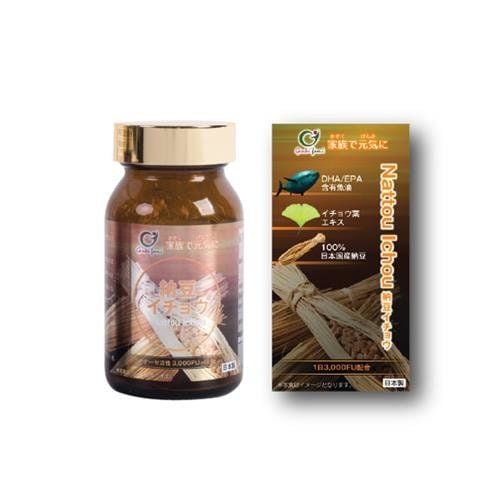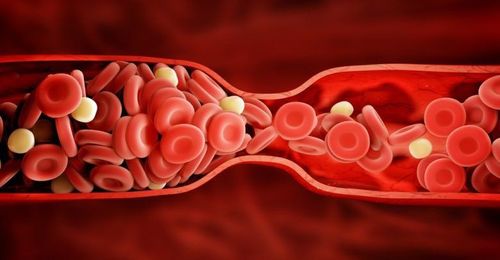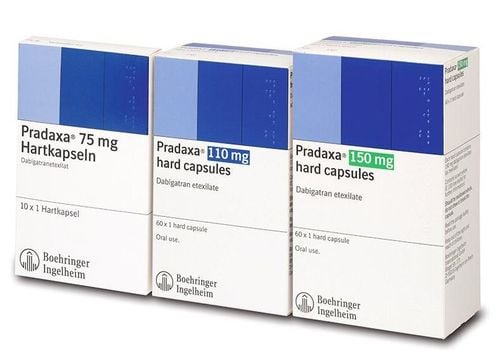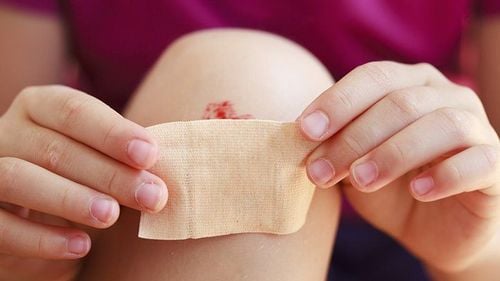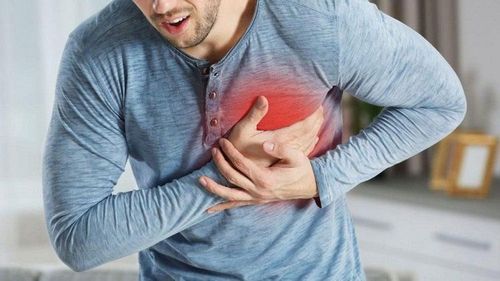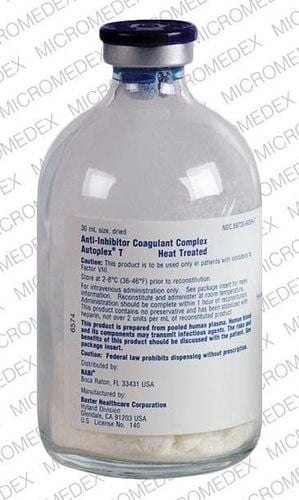This is an automatically translated article.
The article is professionally consulted by Master, Doctor Vu Quoc Anh - Pediatrician - Pediatrics - Neonatology at Vinmec Danang International General HospitalHemophilia in children is common in boys over 3 years old, mainly due to genetic causes. If not treated in time, the disease can easily cause death.
1. What is hemophilia in children?
Hemophilia, also known as hemophilia, is an X-linked genetic disease that causes symptoms of prolonged bleeding due to a deficiency of clotting factors VIII and IX. in the male.People with hemophilia will have a harder time stopping bleeding than usual, easily leading to excessive bleeding. The incidence of hemophilia in newborns is 1 in 10,000. The disease is common in boys 3 years of age and older. Patients with hemophilia may have spontaneous bleeding, internal bleeding, painful joints, and swelling due to bleeding into the joints. Although rare, it is quite serious and can cause life-threatening complications in children.
Hemophilia is classified into 3 types as follows:
Type A (Hemophilia A): The most common form of hemophilia, caused by a deficiency of clotting factor VIII. Approximately 80% of patients with hemophilia are type A; Type B (Hemophilia B): Caused by a lack of clotting factor IX; Hemophilia C: A mild form of the disease caused by a lack of clotting factor XI. Children with hemophilia C usually do not bleed spontaneously, but only after trauma or surgery.
2. Symptoms of hemophilia in children
Pediatric patients can have the disease early in the neonatal period with the following manifestations: umbilical cord bleeding, bruising under the skin, cerebral - meningeal haemorrhage, prolonged bleeding at injection sites,... Symptoms when the child is outside 2 years old: Specific bleeding occurs after trauma such as injection, cut hand, tooth extraction, fall, massage, surgery, ... or may bleed spontaneously. Children often appear large bruises, nosebleeds, blood in stools, blood in urine, pain and swelling in joints,... Knee joint is the most prone to bleeding after trauma, which can cause knee effusion, ankylosing spondylitis, periosteal reaction,... Complications of hemophilia include:Internal bleeding; Joint damage due to frequent bleeding; Neurological symptoms due to bleeding in the brain; There is a high risk of infections such as hepatitis with blood transfusions.

3. How to diagnose hemophilia in children
Hemophilia is diagnosed through blood tests. The doctor will take a small blood sample from the patient's vein to measure the amount of clotting factor in it. The blood sample will then be graded to determine the severity of the clotting factor deficiency:Mild hemophilia: Blood clotting factors in the plasma 5 - 40%; Moderate hemophilia: Blood clotting factors in the blood plasma from 1 to 5%; Severe hemophilia: Blood clotting factor less than 1%.
4. Treatment methods for hemophilia in children
If the patient with hemophilia is not treated promptly, it is very likely to die. Treatment depends on the type of hemophilia. Namely:Hemophilia A: Transfusion of clotting factors to patients depending on bleeding characteristics (Factor VIII concentrates from plasma or recombinant. Treat with desmopressin hormone and can be administered intravenously. to stimulate the factors responsible for blood clotting Hemophilia B: Treatment by infusing clotting factors into the patient's blood Coagulation factors can be donated from another person or artificially; Hemophilia C: Treatment is by plasma transfusion to stop heavy bleeding.Children can be applied physiotherapy to restore function if the joint is damaged due to bleeding.According to the doctor's recommendation, Absolutely do not use Aspirin to relieve pain for pediatric patients because this drug aggravates bleeding. Besides, because of the need for blood and plasma transfusion many times, the child is prone to acute hemolytic disease due to any abnormalities. blood group homology, hepatitis B, malaria parasite infection,... Therefore, children should be closely monitored to prevent complications. this disease.

5. Preventing the risk of hemophilia in children
Hemophilia is passed from parent to child. Although there is no way to detect in advance whether a child has hemophilia or not, IVF can partially control the risk of carrying the disease gene. Couples who carry the disease gene or have a relative who carries a hemophilia gene should also seek counseling before conceiving and giving birth to take measures to reduce the risk of disease in the future.Childhood hemophilia is an inherited disease that is difficult to completely prevent. However, if detected and treated early, the child's health will be protected, minimizing unwanted complications.
Please dial HOTLINE for more information or register for an appointment HERE. Download MyVinmec app to make appointments faster and to manage your bookings easily.





